Corsair Hydro Series: H60, H80 and H100 Reviewed
by Jared Bell on November 7, 2011 12:00 AM EST- Posted in
- Cases/Cooling/PSUs
- Corsair
- Water Cooling
Cooler Installation
Mounting the H60 and H80 radiators is similar except the H80 provides a minor challenge due to its thicker size and having a second fan to install. After all is said and done, it doesn’t pose any real problems. Just make sure to take your time and don't over tighten the screws or you may end up bending the fins on the radiator. Most cases should support either the H60 or the H80 without too much trouble, assuming the case has a mounting point for a 120mm fan. I didn't have any filament problems, and thanks to the low profile of the CPU block, I don't see any issues with the second fan hanging slightly over the CPU block if needed.
The H100's 2x120mm radiator design and 275mm overall length may pose problems depending on your choice of case. You're going to need ~52mm of clearance to install the H100 in its default configuration and a whopping ~77mm if you opt for a push/pull setup. This is of course assuming you have a case that supports 2x120mm fans with the correct 15mm spacing for the radiator/fans.
I even had trouble installing it in Corsair's own Graphite 600T case. Everything fit properly, but I had to install the radiator inside the case and then install the 2x120mm fans inside the lid where the removable panel is. This may not seem like a problem because the 600T was essentially designed this way; however, the top cover is so restrictive it caused temperatures and noise levels to rise. For testing purposes, I had to leave the top cover off in order not to skew the results. Corsair's new Carbide Series 400R/500R looks to be H100-ready, allowing you to install the radiator on top with the fans inside the case. I can't speak from experience with any other cases for the H100, but if your case meets the clearance and spacing requirements, you shouldn't have any issues.
The installation procedure for the water block is the same for each unit we tested. I think it's a welcomed design improvement over the H50 and H70. Since the water block comes preinstalled with the Intel mounting brackets, AMD users will have to remove them and install the included mounting brackets for AMD CPUs. Also, AMD users do not have to worry about installing a backplate because these kits make use of the backplate already installed on your motherboard. The backplate for Intel CPUs has adjustable mounting holes that slide to easily fit any of the supported CPU sockets.
After securing the backplate with the double sided screw mounting posts, securing the water block is as easy as tightening four thumb screws. Previously with the H70, I had issues lining up the water block properly which led to multiple mounting attempts before good contact was made. With the H60, H80, or H100 blocks, I was able to make good contact on the first try. This was later verified with multiple mounts as described in the testing procedures. Just make sure to take your time and tighten the thumb screws in order as recommended in the manual.


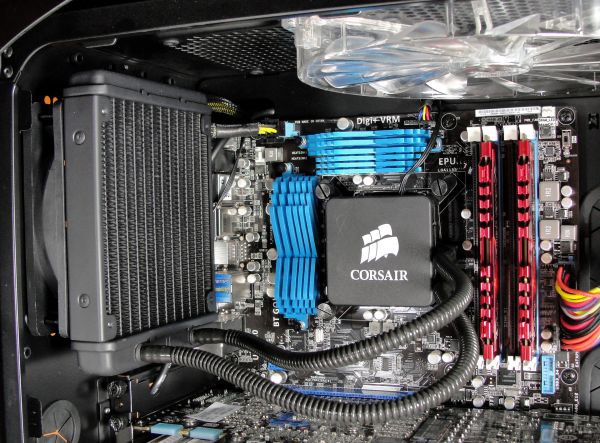
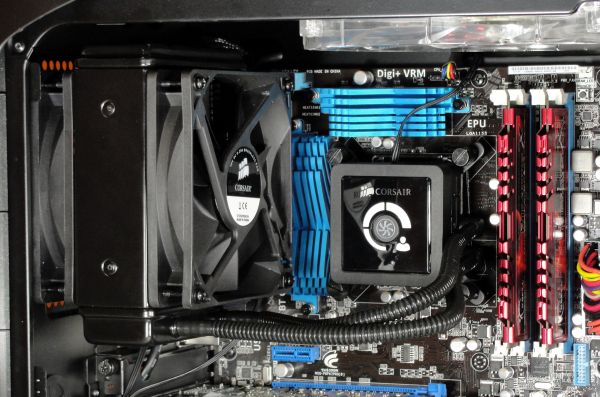
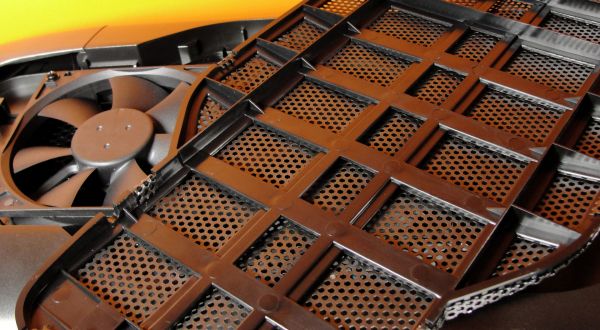
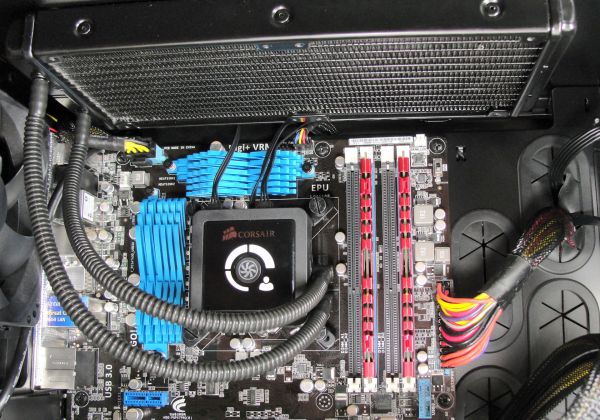

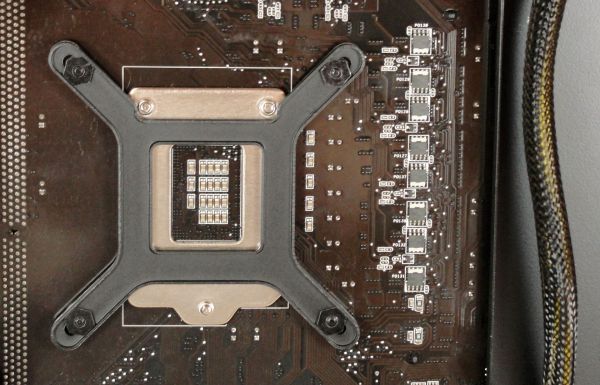








91 Comments
View All Comments
dagamer34 - Monday, November 7, 2011 - link
Seems that even the lowly H60 is good enough that I should replace the stock fan in my HTPC.**USA** - Monday, November 7, 2011 - link
See: "Corsair H100 Install in 600T case" for effective cooling with push/pull fan configuration.KingstonU - Monday, November 7, 2011 - link
Great review! Been looking for a review to cover these exact topics on comparing pros/cons of high end air-coolers to mainstream water coolers. Thanks!I can see now that the only downside of the high-end air cooling solution compared to these is the weight off the motherboard, but has any motherboard actually failed under the load of one of these heavy air coolers? I supposed you could also just your case on it's side and problem solved.
Beenthere - Monday, November 7, 2011 - link
The HSF back plate is there to distribute the load, so the mobo isn't over-stressed.ajtyeh - Monday, November 7, 2011 - link
any users that have done this? it looks like there may be room for 4 screws to attach an equivlant fanDeath666Angel - Monday, November 7, 2011 - link
Yes, you can use an H60 with 2 fans, but since the radiator is still much more narrow you don't get the same results @ same fan rpm. :-)noeldillabough - Monday, November 7, 2011 - link
I know this must exist, is there a such thing as a case that is covered with fins with liquid channels? We could hook up our videocards and cpu to the loop.Then we'd only hear the noise of the pump; or am I mistaken? Seems like a no brainer but perhaps cost prohibitive.
I've always been scared to do a water cooling system, because of leaks, but I don't see the advantage of this closed loop system quite yet. How reliable are current open loop systems and how much plumbing knowledge do i have to have to get it working safely? I'd love to use it on a dual cpu dual vdeocard setup (four blocks)
Beenthere - Monday, November 7, 2011 - link
You can always build extreme H2O units but why bother when refrigeration systems are far superior and easy.Mjello - Monday, November 7, 2011 - link
I don't remember if it was zalaman who launched a commercial product a few years ago. But that was a tower exactly as you describe. Where the sides was cooling. And heatpipes attached to the sides from the cpu.Anyways. You can do that with h100 and a PII X4 3 Ghz stock speed. If you mount the radiator outside like I did. The temp goes up when you turn off my 900 rpm fan but the system isn't overheating. I'll just check the temps for you for fun ;). Give me half an hour
ggathagan - Monday, November 7, 2011 - link
Yeah, Zalman produced two fanless cases (TNN-500 and TNN-300) that used heatpipes to conduct the heat from internal components to the case.That was different from what noeldillabough is talking about; where you are, in essence, making a case out of radiators.
That would be too cost prohibitive and too complex, especially if you factor in the delicacy of such a case.
Radiator fins and water channels have to be thin to be efficient, and that spells disaster without some sort of protection.
Adding that protection to the outside of a case would add even more complexity and create a nightmare as far as being able to ship it without fear of damage.
There's also the issue of weight to consider and we haven't even started on what customer support would be like.
Zalman still makes the Reserator, which is an external cooling system along the lines of what you mentioned.